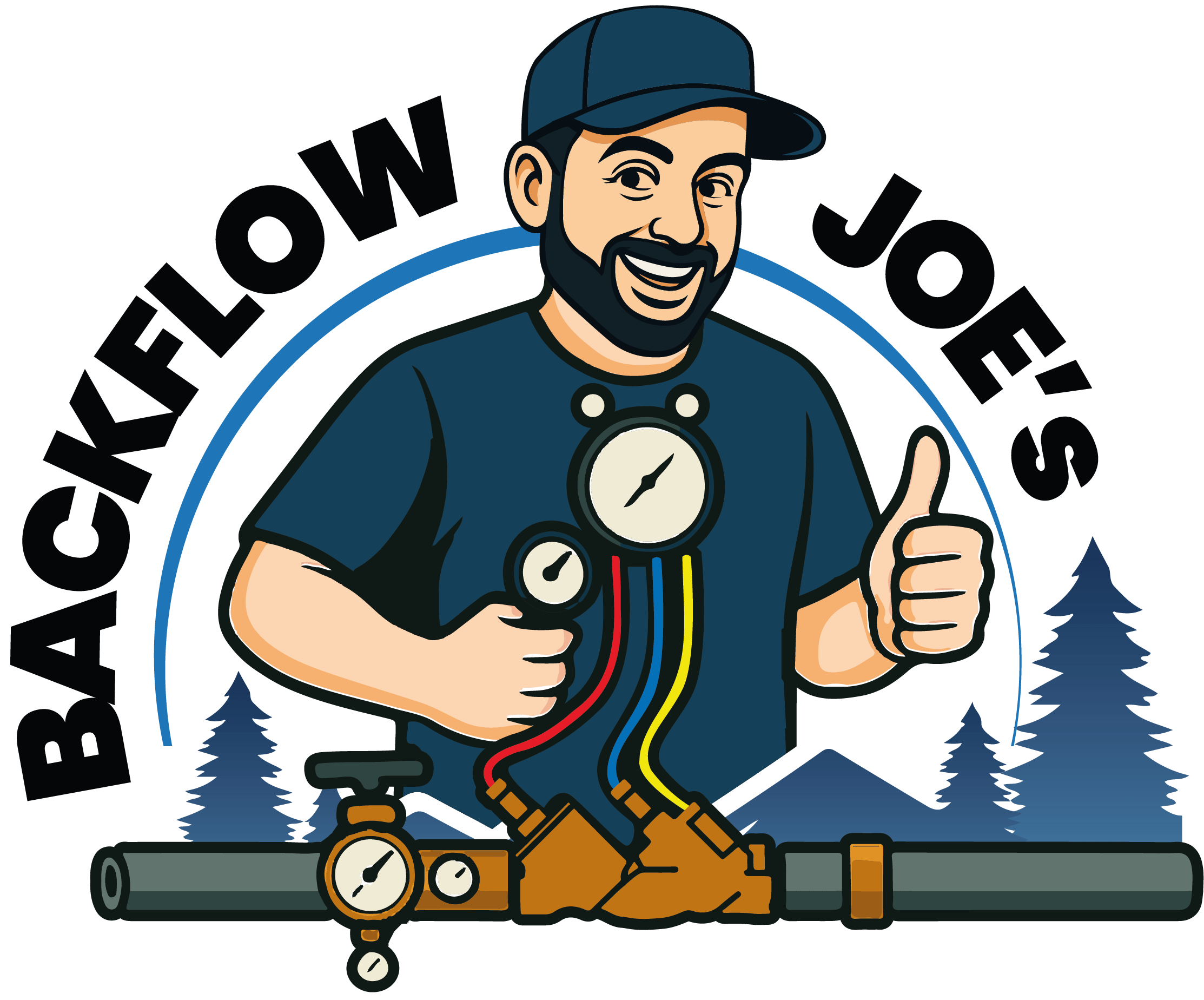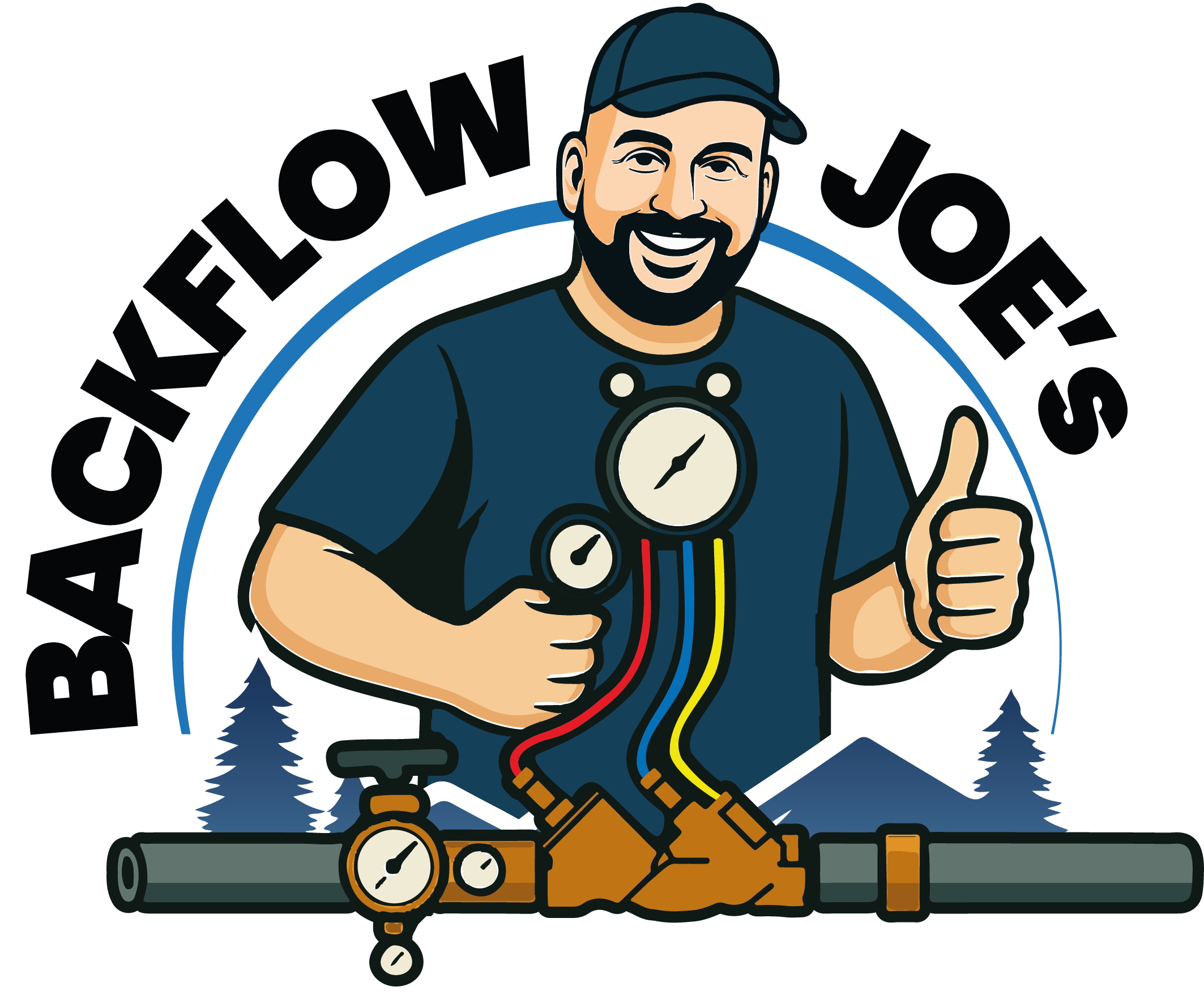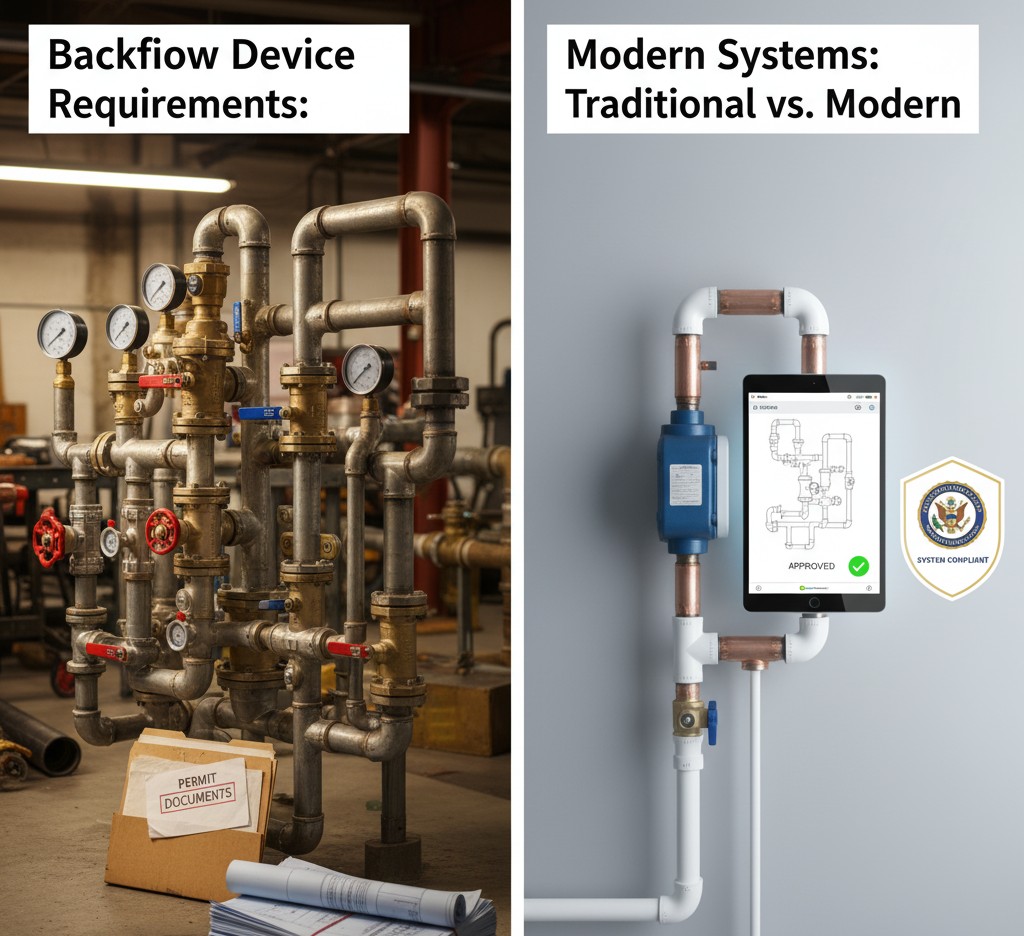If you own property in the Hudson Valley, you’ve probably heard different rules tossed around about backflow prevention. Some towns want stamped plans. Others ask for specific forms. And yes—both the county and the local water purveyor get involved.
This guide strips it down. Westchester County on one side. Dutchess County on the other. Same goal—protect the public water—but slightly different paths to get your device approved, installed, and kept in compliance.
Why the rules exist (and who sets them)
Backflow prevention isn’t a suggestion. It’s baked into New York State sanitary code and enforced locally. High-risk connections—irrigation, fire suppression, commercial processes, soda machines, boilers, labs—can push contaminants into drinking water if pressure reverses. That’s why the state requires certified testers and why counties and water systems run cross-connection control programs. New York State Department of Health
Everything below fits inside that framework. The differences come from how each county runs its program and what your particular water purveyor requires.
Westchester County: plan-first, permit-first, then install
Westchester runs a tight, centralized program through the Westchester County Department of Health (WCDOH). The headline rule is simple: get County Health approval before you install or replace a backflow device. No approval, no install. You’ll see that language on multiple municipal forms around the county because they funnel you back to WCDOH for the actual device sign-off. Yorktown Consolidated Water District
What that looks like in practice
-
Hazard evaluation and device selection
A PE or RA (for most commercial and many residential irrigation systems) evaluates your site and specifies the correct device—often DCVA, RPZ, or PVB, depending on hazard level. The county expects the right match to the risk. Their guidelines point you to your local water purveyor for device type nuances (some purveyors are stricter than minimum state guidance). health.westchestergov.com
-
Stamped plans + application to WCDOH
You (or your engineer) submit an application packet to WCDOH with plans, device specs, and details on location and drainage for RPZs. Several Westchester water departments host the county packet on their sites; the message is consistent—don’t install until WCDOH issues written approval. Greenburgh Police Department
-
Water purveyor coordination
If you’re in a system like Westchester Joint Water Works (WJWW), you’ll also submit their forms. WJWW clearly states federal, state, and WJWW rules apply and maintains a library of applications. Expect them to check your use cases (irrigation, fire lines, pools, etc.) and require approved devices plus testing. WJWW+1
-
Install to the approved plans
Your plumber installs exactly where and how the approved drawings specify—clearances, orientation, relief-valve discharge (for RPZs), freeze protection, and accessibility all matter.
-
Post-install inspection and initial test
The device is tested by a New York State–certified tester and results filed (form DOH-1013 or the water purveyor’s required format). Many municipalities remind owners to submit the test report to both the village/town and WCDOH each year thereafter. New York State Department of Health
Annual Testing in Westchester
Every installed device must be tested annually by a NYS-certified tester. Certain villages (Sleepy Hollow is one example) call out the reporting rhythm and where to send the DOH-1013 each year. Don’t miss the date; fines or shutoffs are possible if you let it lapse. Sleepy Hollow
Bottom line for Westchester:
county-level approval first, install second. Expect stamped plans for most non-trivial cases, coordinate with your water purveyor, and file that annual test with WCDOH (and your village/town if they ask for a copy). health.westchestergov.com
Dutchess County: county health oversight, but more variance by municipality
Dutchess County’s program runs through the Department of Behavioral & Community Health (DBCH). It leans on New York State sanitary code and county design/plan-submission standards, while leaving some procedural specifics to each municipality or water authority. Think “county standards + local submission paths.” Dutchess County Government
You’ll see this in local codes and eCode references: towns or villages often require you to submit plans with a DBCH application when a device is needed. The Village of Red Hook’s code is a clean example—hire a PE, prepare backflow plans, and submit them alongside a Dutchess County Department of Health application for approval. eCode360
The typical Dutchess path
-
Determine hazard + device
Engineer or qualified designer identifies hazards (irrigation, fire lines, commercial processes, boilers). Device selection aligns with state/county standards and the local water system’s preferences.
-
Plans and DBCH submission
For commercial and many residential irrigations installs, prepare plans that show meter location, device location, drainage, and service details. Dutchess County’s design and construction standards explicitly require that meters and backflow prevention be shown on the plans where applicable—so plan on submitting drawings, not just a device cut sheet. Dutchess County Government
-
Local code/utility steps
Depending on where you are—Wappingers Falls, Red Hook, Town water districts—you may file locally and with DBCH. Some local codes also spell out technical definitions and minimums (like air gap dimensions) if that’s your chosen means of protection.
-
Install after approval
As with Westchester, don’t install before county sign-off. If you’re in a Dutchess County Water & Wastewater Authority (DCWWA) system, coordinate device type and paperwork with the Authority as well. Dutchess County Government
-
Testing + ongoing filings
Devices must be tested at install and then annually by a NYS-certified tester. The state maintains county-specific lists of certified testers; Dutchess property owners should pick from that roster and keep reports on file for the county and, where applicable, the municipality. New York State Department of Health+1
Bottom line for Dutchess:
county health approval is still the gate, but the submission route often passes through your local town/village or water authority. Plans are expected for commercial and most meaningful residential installs, and annual testing is a given. Dutchess County Government
The similarities (so you don’t overthink the differences)
- State foundation: Both counties enforce New York State sanitary code and the certified-tester requirement. If your tester isn’t on the NYSDOH list, your report can be rejected. New York State Department of Health
- Annual testing: Westchester and Dutchess both require yearly tests and filings. Expect reminders—or penalties—if you miss them. Sleepy Hollow
- Engineer-stamped plans for higher hazard: Commercial, mixed-use, and complex residential (like big irrigation or pools) typically need PE/RA plans in both counties. health.westchestergov.com
- Water purveyor say-so: “Your local water system can be stricter than the baseline. In Westchester, WJWW is a good example with explicit processes and forms. In Dutchess, DCWWA and individual villages enforce their own submittal steps on top of county health. WJWW
The practical differences (how it feels when you do it)
-
Paper flow:
Westchester feels more centralized: WCDOH is the hub, and many municipalities route you right back to the county’s Cross-Connection Control page and forms. In Dutchess, you still need county health approval, but you’ll see more “submit plans to the code officer with a DBCH application” language in local codes.
-
Guidance visibility:
Westchester’s program materials are easy to find and consistent across municipal sites (Yorktown, Greenburgh, Buchanan, etc.). In Dutchess, you’ll often rely on the DBCH design standards plus your specific village/town eCode page and your water authority’s directions. Town of Yorktown New York
-
Local code flavor:
Dutchess village codes sometimes lay out technical definitions and minimums (air gap, device types, process steps) right in eCode. Westchester villages lean more on WCDOH documents, then layer their own submission logistics.
Owner checklists you can use
Westchester County checklist
- Confirm your water purveyor (WJWW, municipal system, etc.). Check if they have their own forms.
- Hire a PE/RA (commercial/irrigation/complex jobs) to stamp device plans.
- Submit the backflow application packet to WCDOH and wait for approval before installation.
- Install exactly as approved.
- Test with a NYS-certified tester and file results with the village/town and WCDOH as required. Repeat annually.
Dutchess County checklist
- Identify your water authority (municipal system or DCWWA) and your municipality’s code page.
- Engage a PE to prepare plans showing meter + backflow locations and details; DBCH expects these on plan sets where applicable.
- Submit plans to your local code office and the DBCH using the county application path noted in your town/village code (Red Hook is a good example of the process).
- After approval, install and perform initial test with a NYS-certified tester. Keep reports on file and renew annually.
Common pitfalls we see (and how to avoid them)
- Installing before approval
Westchester will fail the job if you install first. Don’t do it. Wait for WCDOH’s written approval. Same mindset applies in Dutchess—DBCH wants the submittal/approval trail. - Wrong device for the hazard
Your water purveyor may require RPZ where you assumed DCVA. Always confirm with the purveyor and the county reviewer before you submit. - Missing annual test
NYSDOH requires certified testers, and municipalities like Sleepy Hollow call out annual DOH-1013 filings. Put the renewal on a calendar. - No drainage for RPZ relief
Inspectors look for proper relief-valve discharge and freeze protection. If it’s not on your plan, add it. - Unclear ownership of filings
In both counties, the owner is responsible for ongoing compliance—even if your contractor handles the paperwork. Know where your final permit, approval letter, and test reports live.
Quick takeaway for busy owners
- Westchester: WCDOH is your main gatekeeper. Get county approval first, coordinate with your water purveyor (WJWW or local), then install and file your annual tests.
- Dutchess: DBCH approval is required, but you’ll likely submit through your local town/village as well. Plans on file, install to plan, test annually with a NYS-certified tester.
If you want this handled without the paperwork headache, hire a contractor who does both counties every week and already speaks “permit.” That’s where a shop like ours makes life easier.

